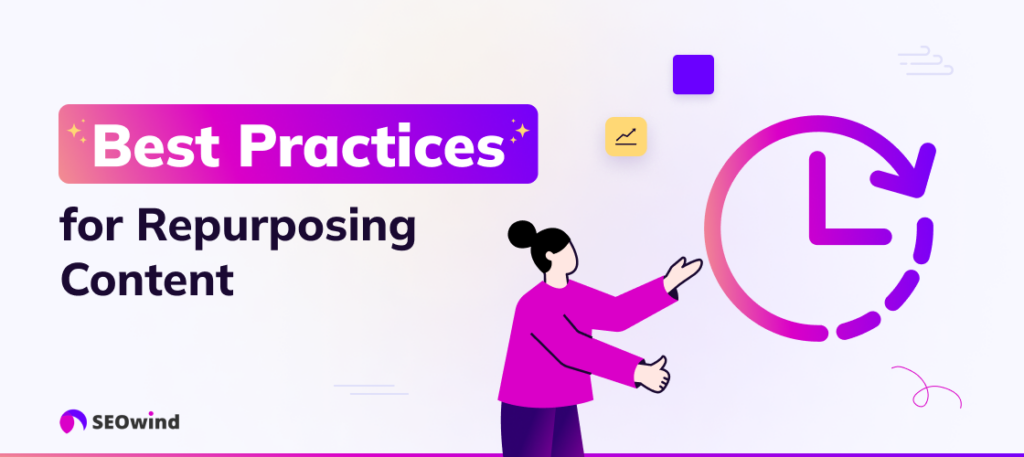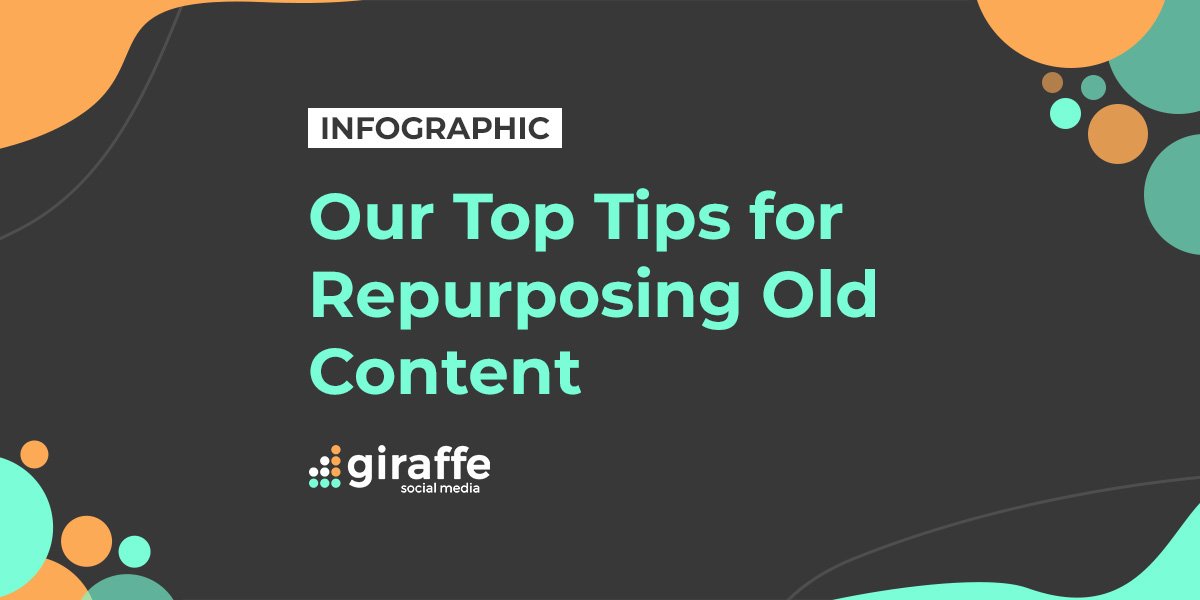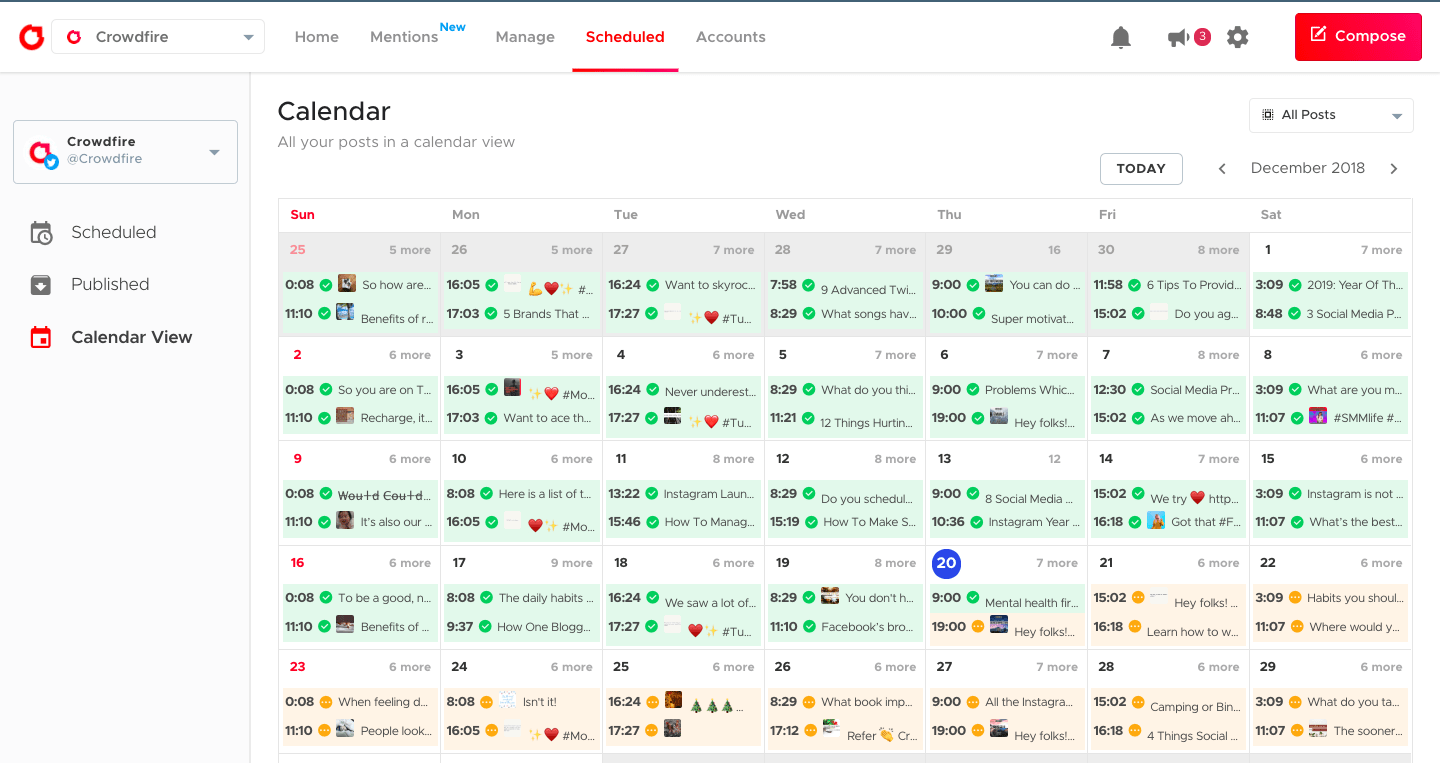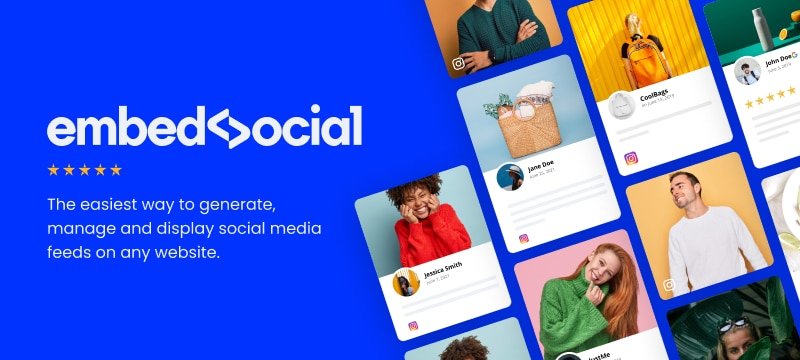Best Practices for Repurposing Content to Maximize Reach
In the world of digital marketing, producing high-quality content is an essential aspect of any successful strategy. However, creating fresh material can often feel like a daunting and time-consuming task. This is where the best practices for repurposing content come into play, allowing marketers to breathe new life into existing assets while maximizing their reach and impact. By effectively leveraging previously created content, businesses can save time, maintain audience engagement, and enhance their overall content strategy.
Understanding Content Repurposing

Content repurposing refers to the practice of taking existing content and adapting it for different formats, platforms, or audiences. It’s not simply about re-posting; rather, it involves strategically transforming content to better suit various channels and engage different segments of your audience.
Definition of Content Repurposing

At its core, content repurposing is the process of using existing content to create new forms of media. This could involve transforming a blog post into a video, turning a webinar into an infographic, or converting a podcast episode into a series of social media posts. The objective is to maximize the value derived from each piece of content while reducing the repetitive effort of starting from scratch.
Repurposing is more than just reshaping the format; it also requires consideration of the target audience, context, and relevance of the original message. By aligning the repurposed content with current trends and audience preferences, marketers can enhance its effectiveness further.
Importance of Content Repurposing

The importance of content repurposing cannot be overstated in today’s fast-paced digital landscape. Here are several reasons why you should consider incorporating this strategy:
- Maximizing Reach: Different people consume content in varying formats. Repurposing allows businesses to tap into those preferred formats, reaching broader audiences across diverse platforms.
- Boosting SEO: Fresh content is vital for search engine optimization. Repurposing existing content can help keep older material relevant and visible, improving its chances of ranking higher on search engine results pages.
- Enhancing Longevity: Not all content has the same shelf life. Repurposing allows marketers to give enduring pieces a new lease on life, increasing their visibility and engagement long after their initial release.
- Time and Resource Efficiency: Creating original content can be resource-intensive. By repurposing, businesses can optimize productivity, enabling them to focus on other aspects of their marketing strategies.
Types of Content Suitable for Repurposing

Not all content is equally suitable for repurposing. Certain types are inherently more flexible and adaptable. Here are some of the most common forms of content that lend themselves well to this practice:
- Blog Posts: Written articles can be transformed into videos, podcasts, or infographics, making them versatile tools for engagement.
- Webinars: Recorded webinars provide rich information that can be sliced into shorter videos, blog series, or even guides.
- Social Media Posts: High-performing social media updates can easily be expanded into longer articles, visual content, or email newsletters.
- Case Studies: Detailed case studies can be condensed into compelling slideshows or engaging video narratives.
By identifying which types of content have the potential for repurposing, marketers can create a strategic plan to optimize their content library effectively.
Identifying High-Performing Content

Before diving into the repurposing process, it’s crucial to identify which pieces of content yield the best performance. Recognizing high-performing content can lead to smarter repurposing decisions and ultimately enhance engagement.
Analyzing Content Performance Metrics

Analyzing content performance metrics is essential for understanding what resonates with your audience. Some key metrics to examine include:
- Page Views: Popularity can often be gauged by how many people have viewed your content. High page views indicate that a particular piece has struck a chord among your audience.
- Social Shares: If content is being shared widely on social media, it suggests that the audience finds it valuable and worth spreading.
- Comments and Engagement: Analyzing comments can provide insights into audience sentiment and interest levels, helping you determine which topics warrant further exploration.
- Conversion Rates: Ultimately, the goal of any content is to drive conversions. Tracking how many leads or sales stem from specific content can help identify true high performers.
While data provides a quantitative perspective, blending it with qualitative feedback from users can offer a holistic view of content performance.
Recognizing Evergreen Content

Evergreen content refers to material that remains relevant over time, providing ongoing value without becoming outdated. Identifying evergreen pieces within your existing content library is paramount for effective repurposing since they can be adjusted and reintroduced repeatedly.
Examples of evergreen content include:
- How-To Guides: Instructional content that teaches readers how to accomplish a task tends to remain valuable regardless of the changing landscape.
- Listicles: Lists covering timeless topics often garner consistent interest as they can be updated periodically.
- Frequently Asked Questions (FAQs): Addressing common queries ensures a steady stream of traffic as new users continually seek information on these topics.
Repurposing evergreen content allows businesses to maintain a continuous dialogue with their audiences, as the information remains pertinent and beneficial over time.
Tools and Techniques for Tracking Engagement
Various tools and techniques can facilitate the tracking of content engagement. Some popular options include:
- Google Analytics: This robust platform offers detailed insights into web traffic, user behavior, and conversion rates, allowing marketers to analyze which content performs best.
- Social Media Analytics: Most social media platforms provide built-in analytics that tracks engagement metrics such as likes, shares, and comments, giving insight into content performance across channel-specific audiences.
- Email Marketing Software: Email campaigns can yield valuable data regarding open rates and click-through rates, helping to identify which topics resonate most with subscribers.
By utilizing these tools, marketers can gain actionable insights that inform their content repurposing strategy, leading to more informed decisions on what to adapt and how.
Strategies for Effective Repurposing

Once you’ve identified high-performing content, it’s time to develop effective strategies for repurposing. This stage is where creativity meets practicality to ensure that repurposed content captures audience attention while meeting platform-specific requirements.
Adapting Formats for Different Platforms
Different platforms require distinct content formats to optimize engagement. When repurposing content, it’s essential to adapt your materials accordingly.
For instance:
- Video: A blog post can be transformed into a video by summarizing key points with visuals. This appeals to users who prefer consuming content through visual means.
- Infographic: Key statistics and takeaways from a research article can be visually represented in an infographic, making complex data easier to digest.
- Podcasts: Taking written content or an interview from a blog and converting it into an audio format caters to audiences who enjoy listening while multitasking.
Understanding the nuances of each platform ensures that content not only fits but thrives in its new form.
Updating and Refreshing Old Content
Another effective strategy for repurposing is updating and refreshing old content. Over time, even well-received pieces may lose relevance due to changes in industry standards, technology, or audience interests. Here are some ways to approach this:
- Add New Data: Conduct regular audits of existing content to update statistics, incorporate recent findings, or cite emerging trends.
- Revise for Clarity: As language and communication styles evolve, revising older content ensures that it aligns with contemporary terminology and reader preferences.
- Incorporate User Feedback: Utilize comments and feedback received on older content to make necessary adjustments or expansions, enhancing the overall quality of the piece.
Refreshing old content not only keeps it relevant but also signals to your audience that you are committed to providing valuable, up-to-date information.
Creating Multi-channel Campaigns
A powerful way to leverage repurposed content is to create integrated multi-channel campaigns. By coordinating messages across various touchpoints, you strengthen brand visibility and deliver cohesive narratives.
Strategies for multi-channel campaigns include:
- Cross-Promotion: Promote a single piece of repurposed content across multiple platforms. For instance, share a video on YouTube, snippets on Instagram, and links back to the original blog on Facebook.
- Content Series: Consider developing a thematic series around a topic. Each piece can take a different angle, yet together they build a comprehensive narrative that engages audiences over an extended period.
- User-Generated Content: Encourage your audience to contribute their perspectives on your original content, then highlight these contributions in your repurposed pieces, adding layers of authenticity and community involvement.
These coordinated efforts enhance audience reach and provide multiple entry points for engagement, driving both awareness and interest.
Enhancing Audience Reach and Engagement

Engaging your audience is a fundamental goal of any content strategy. Effective repurposing goes hand-in-hand with enhancing audience reach and interaction, ensuring your content not only gets seen but also encourages participation.
Tailoring Content to Target Audiences
Understanding your audience’s characteristics and preferences is critical when repurposing content. Tailored approaches increase engagement and improve the relevance of the content produced.
- Segmenting Audiences: Divide your audience based on demographics, interests, and behaviors. Create targeted versions of repurposed content that speak directly to different segments.
- Custom Messaging: Adapt the tone and style of your repurposed content according to the audience. For example, what works for industry professionals may not resonate with general consumers.
- Cultural Relevance: If your audience includes individuals from various cultural backgrounds, consider how cultural nuances might affect content perception. Adjustments may include language use, examples, or references that resonate with specific groups.
By tailoring content to meet audience expectations, you foster a stronger connection that translates into higher engagement levels.
Utilizing SEO Best Practices in Repurposed Content
SEO plays a vital role in ensuring that your repurposed content reaches its intended audience. By implementing effective SEO strategies, you can enhance the visibility of your repurposed pieces across search engines.
- Keyword Optimization: Incorporate relevant keywords throughout your repurposed content, including titles, headers, and descriptions. This helps search engines recognize your content’s relevance to specific searches.
- Meta Descriptions and Tags: Craft compelling meta descriptions and utilize appropriate tags to improve click-through rates from search engine results.
- Link Building: Include internal and external links within repurposed content to bolster credibility and direct readers to related resources, thus enhancing the user experience.
Utilizing SEO best practices will not only improve discoverability but also enhance the overall efficacy of your content strategy.
Encouraging Interaction and Feedback
Engagement doesn’t stop at consumption; encouraging interaction and feedback is essential for building a loyal community around your brand. Here are some tactics to promote interaction:
- Call-to-Action (CTA): Every piece of repurposed content should include clear CTAs inviting readers to comment, share, or explore further.
- Surveys and Polls: Use interactive elements like surveys and polls to solicit feedback on your content while fostering active participation.
- User Contributions: Allow users to submit their own stories or insights related to the topic. Highlighting these contributions in your content encourages a sense of community.
Encouraging interaction not only boosts engagement levels but also provides valuable insights that can inform future content strategies.
Measuring the Success of Repurposed Content

To assess the impact of your repurposed content, it’s crucial to implement effective measurement strategies. This stage involves setting clear goals, tracking performance metrics, and utilizing insights for continuous improvement.
Setting Key Performance Indicators (KPIs)
Establishing KPIs helps frame your content strategy and assesses the success of repurposed pieces. Here are some key areas to consider:
- Traffic Growth: Monitor increases in website traffic resulting from repurposed content.
- Engagement Metrics: Track likes, shares, comments, and other forms of engagement to gauge audience interest.
- Lead Generation: Measure the number of leads generated by repurposed content, indicating its effectiveness in driving conversions.
Defining KPIs allows businesses to evaluate the performance of their repurposed content, ensuring alignment with overarching marketing goals.
Analyzing ROI on Repurposed Content
Determining the return on investment (ROI) for repurposed content is crucial for understanding its financial impact. Consider analyzing:
- Cost of Creation: Compare the resources used in creating original content against the costs associated with repurposing.
- Revenue Generated: Assess how much revenue can be attributed to the repurposed content, including direct sales and opportunities generated through increased leads.
- Customer Lifetime Value (CLV): Understand the long-term value of customers acquired through repurposed content efforts.
By analyzing ROI, businesses can make informed decisions about their content strategy, optimizing for cost-effectiveness and maximum impact.
Continuous Improvement Based on Insights
Finally, the measurement process should not end with evaluation; it should pave the way for continuous improvement. Engaging in cycles of analysis enables organizations to refine their approaches continuously.
- Post-Mortem Reviews: After a repurposed campaign concludes, conduct thorough reviews to assess what worked and what didn’t. Identify lessons learned to apply to future efforts.
- Iterative Testing: Implement A/B testing for different formats or variations of repurposed content to understand which resonates best with your audience.
- Staying Current: Keep abreast of industry trends and evolving audience preferences to inform ongoing content adaptations.
An agile approach to improvement ensures that your repurposing strategy remains effective and relevant over time.
GoHighLevel supports best practices for repurposing content by centralizing and automating content management. Its all-in-one platform allows businesses to easily reuse and redistribute content across multiple channels, from social media posts to email campaigns. By leveraging its CRM and automation features, GoHighLevel helps streamline the process, maximizing reach while maintaining consistency in messaging. This approach ensures that repurposed content remains effective, reaching broader audiences and boosting engagement without requiring additional resources.
Conclusion
Implementing the best practices for repurposing content can significantly enhance your content strategy, leading to improved audience engagement, higher visibility, and optimized resource allocation.
From understanding the definition and importance of content repurposing to identifying high-performing pieces and measuring success, each step contributes to a cohesive and effective marketing approach.

By recognizing the types of content suitable for repurposing, employing tailored strategies for various platforms, and continuously evaluating performance metrics, businesses can stay ahead of the curve in an ever-evolving digital landscape. Ultimately, by breathing new life into existing content, marketers not only maximize their efforts but create meaningful connections with their audiences – ensuring that every piece of content continues to resonate long after its initial release.




